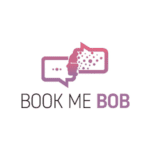 Hiring the wrong employee can cost you time and money, which hampers your progress. Make a poor hiring decision, and it may cost you more than that—your customers may start leaving you for good.
Hiring the wrong employee can cost you time and money, which hampers your progress. Make a poor hiring decision, and it may cost you more than that—your customers may start leaving you for good.
This a lot of pressure on human resources. From recruitment to onboarding, the hiring process has many moving elements and just as many opportunities for failure. There is a way to improve and master it, though. The only thing your company needs is a fresh approach and the following hiring hacks.
Below we’ve listed some tips for your recruitment and onboarding process. If you’re trying to do your entire hiring process remotely, check out our guide to recruiting and online training. If your recruiting and onboarding takes place in-office, then read on to learn how to improve your hiring process!
1. Diversify and redefine your job requirements
If not enough qualified candidates are applying to jobs in your company, the problem may be hidden in plain sight. In 2015, researchers from the US and Canada suggested that poor job postings are the number one cause for low application rates.
But what qualifies as a good job advertisement?
According to these researchers, job postings should be more than a laundry list of requirements. They should also be inspirational. More than anything, a good job listing should answer the question “why is this company a good career and life choice for me?”
2. Employ a new approach to discovering talent
Candidate-focused job postings look really good on candidate-focused job boards.
If popular career sites haven’t helped you find the right candidates, then dive deeper into the talent pool. Along with Facebook job advertisements, LinkedIn is one of the best sources for discovering job seekers that fit your needs.
Great opportunities can be discovered on networking events as well, but there’s an even better offline approach to talent recruitment—employee referrals.
Your staff knows everything about your company, its goals, culture, team dynamic, and day-to-day operations. Nobody is better equipped for talent recruitment than existing employees.
And, since they are expected to vouch for their candidates, they’ll think twice before referring a person for the job.
3. Streamline your background check strategy
Screening is expensive and time-consuming, so why conduct a background check on all applicants?
Many companies are streamlining this process by making a selection first and then screening only the final candidates.
This puts an emphasis on what’s truly important, and what’s candidates’ hard and soft skills. Plus, reversing the order helps you make the final decision faster.
On a related note, some roles don’t require certain screening tests. A candidate’s driving history, for instance, won’t help you identify if they’re a good software engineer.
To make background checks more efficient, consider tailoring your screening process to the needs of each position.
4. Start hiring for attitude and training for skills
By prioritizing work ethics, flexibility, and teamwork over expertise and technical skills, this recently popularized approach to hiring helps build dynamic teams.
Hiring for attitude allows you to access a wider talent group. Candidates who pass the attitude test can make better employees in the long-term. They are in the right mindset to learn, develop new skills, and contribute to the future of your company.
Besides, necessary skills change fast in the modern age—the tools your employees will be using in three years will be different from the ones they use today.
5. Use tools to eliminate bias and boost efficiency
A great part of your recruitment and selection process can be automated.
- AI for screening can reduce your time per hire and eliminate bias.
- Candidate rediscovery tools help you re-engage past candidates.
- Chatbots can boost engagement with new candidates.
You can expect developers and HR specialists to launch a brand new generation of hiring tools that will be AI-based and focused on automating screening, optimizing selection, and eliminating bias from the recruitment process.
These tools will introduce a practice called recruitment marketing and allow you to use marketing techniques such as multichannel approach, targeted ads, and deep analytics to discover, attract, and engage better-qualified candidates.
6. Collect and analyse feedback from candidates
Candidate rediscovery is another practice that helps recruiters save time and money. It’s also one of at least two reasons why you should never lose touch with candidates you didn’t fire.
The other reason is about improvement.
A candidate who’s just been offered a job at your company would hardly go on record with rating your hiring experience. The candidates who you have turned down, on the other hand, would probably have a lot to say about your employer brand.
Use that opportunity to collect and analyze candidate feedback. This will equip you with valuable insight into how applicants perceive your hiring process and tell you what needs to be changed and why. Automation tools can speed up this process as well.
7. Keep optimizing your onboarding program
Selection is not the last step in the hiring process. Your employer brand depends on your willingness to help new hires adapt to a new work environment and get used to their day-to-day responsibilities. This part of the process is called onboarding.
The most important thing every employer should understand about onboarding is, that it cannot be rushed. On the contrary, this should be a continual practice. To avoid spending more time and money, use LMS software to train for skills.
Conclusion
Yes, hiring the right person for the job is critical.
True, the entire process is time-consuming, expensive, and prone to failures.
But consider this—if you break it down to smaller steps and take time to streamline (and automate) every task, you’ll be able to come up with an improved version of your original hiring strategy. And if you keep improving on that version too, your hiring success rate will eventually go through the roof.
Author Bio: Kamy Anderson is an ed-tech enthusiast with a passion for writing on emerging technologies in the areas of corporate training and education. He is an expert in learning management system & eLearning authoring tools.



















